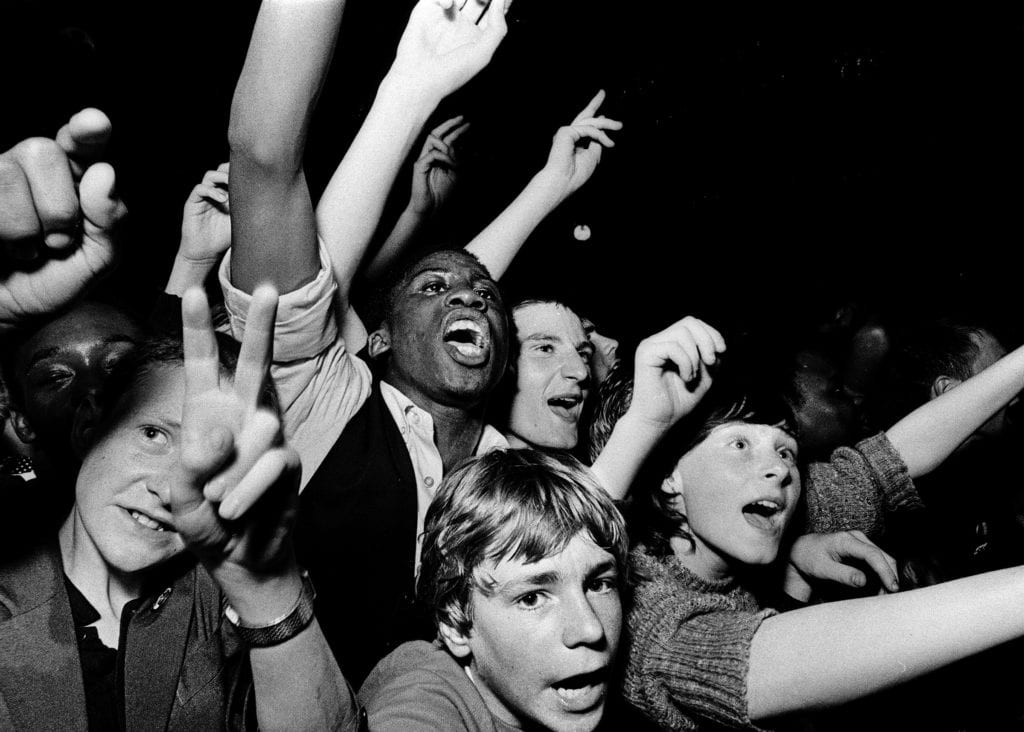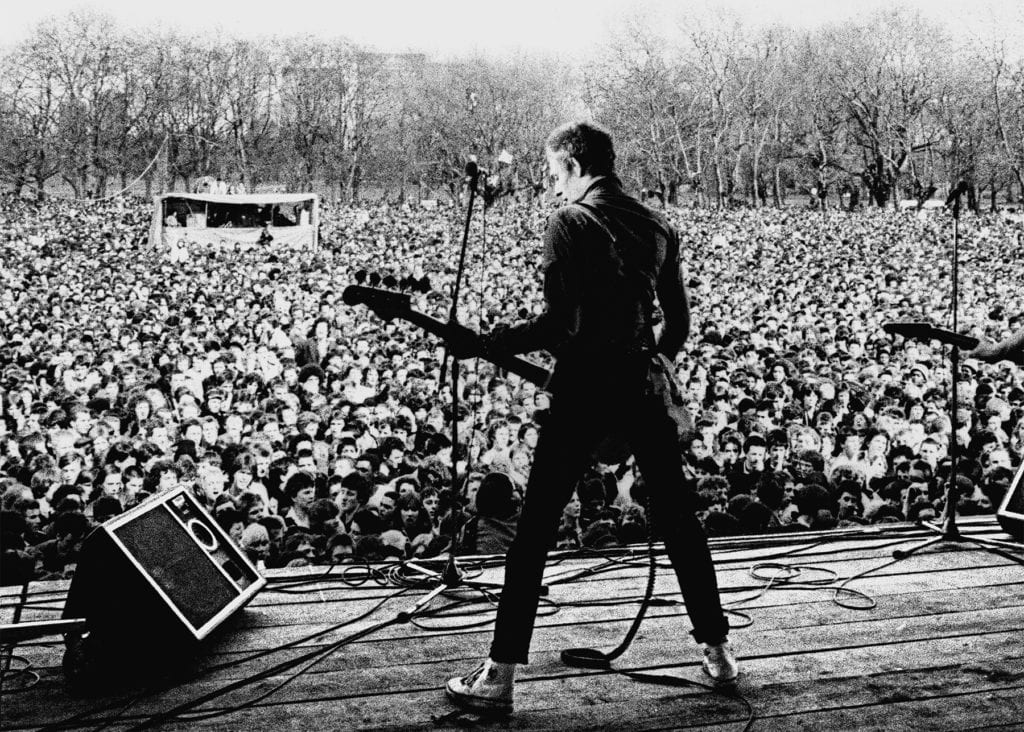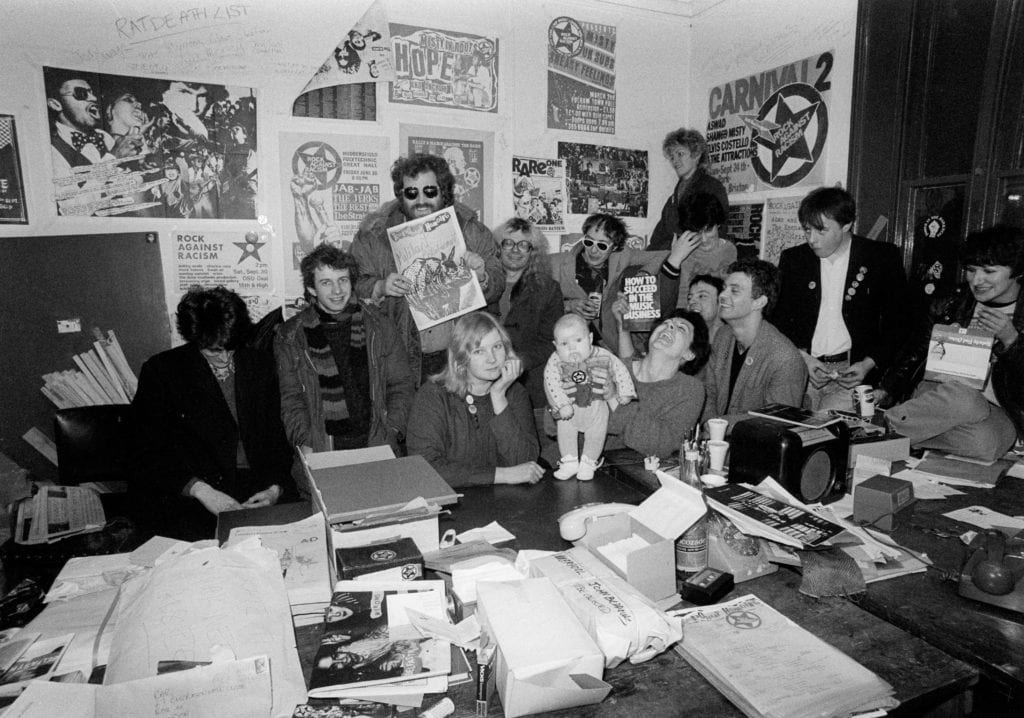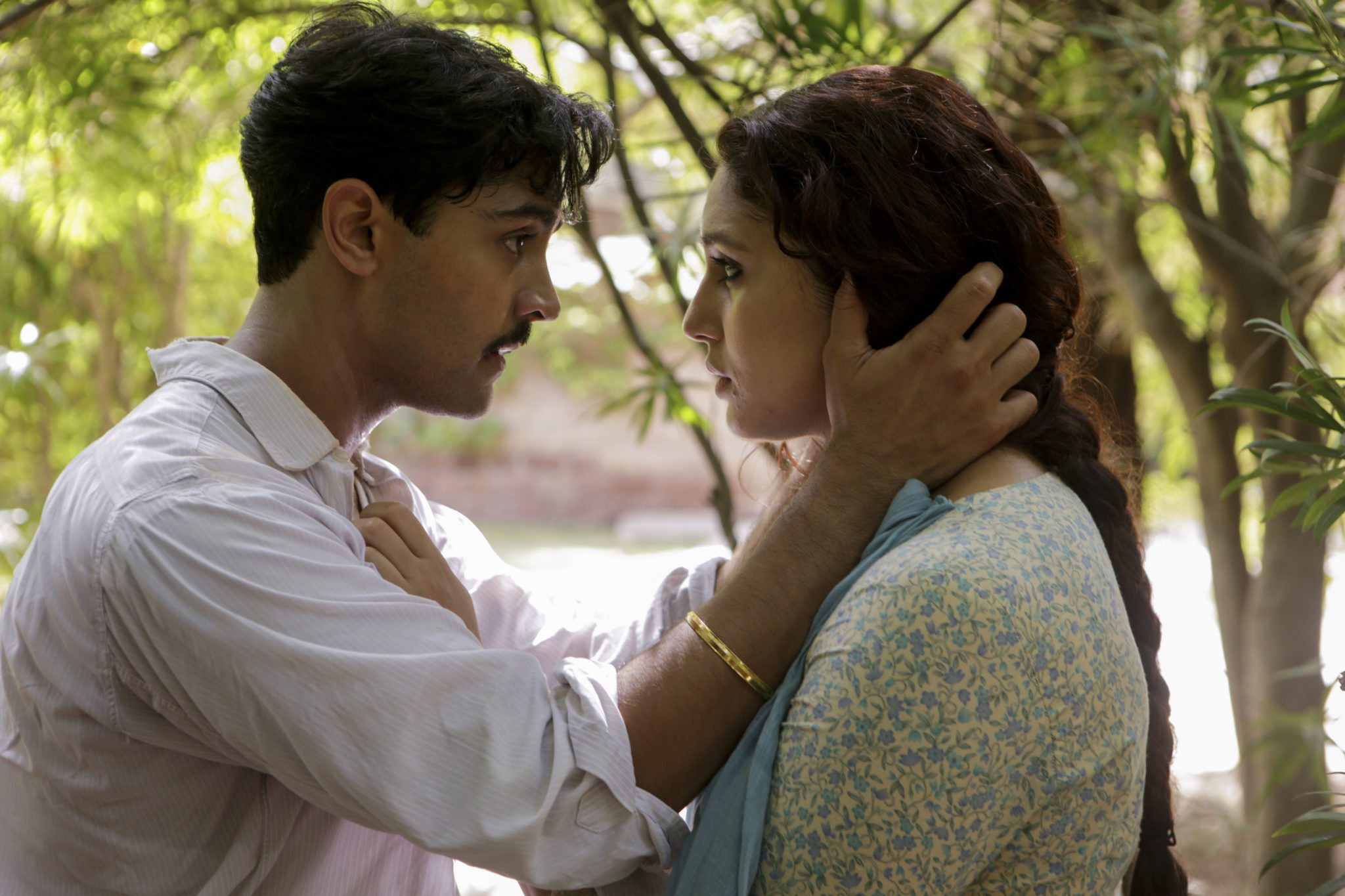
Directed by Rubika Shah, the new documentary White Riot transports the viewer to late-1970s Britain during the punk rock revolution. As bands like The Clash and Steel Pulse were beginning to make their musical mark on the world, the country was also deeply divided over immigration issues. In response to the xenophobic agenda of The National Front, a far-right political party led by Enoch Powell, that continued to gain strength, music photographer Red Saunders calls for rock to become a force against racism.
Teaming up with like-minded creatives Roger Huddle, Kate Webb, Syd Shelton and Australian graphic designer Ruth Gregory, the team bands together to create Rock Against Racism (RAR) and the fanzine, Temporary Hoarding, with the intent to turn the tide in the war against racial injustice. As RAR spread virally across the UK, the battle for equality gradually became a grassroots youth movement, causing many punk rock icons to show their support by jumping on board as well.

Visceral and honest, Shah?s film shows what can happen when you give voice to the voiceless. Through her use of revealing (and terrifying) footage, White Riot offers fresh perspective on a portion of history that is not widely known by the general public. As the National Front drove a movement of civil unrest and injustice throughout the nation, the underground work of Saunders and Temporary Hoarding was able to tap into and create a groundswell of public opinion that helped change a nation. By reporting stories that the mainstream British media ignored, the fanzine was able to present an opportunity for the oppressed (or those on their behalf) to speak out against the injustices of the culture. In fact, considering the fact that this was a world long before social media, it?s actually amazing of the affect that Hoarding was able to have on the larger culture. Hitting the pavement and handing out hard copies of their free press, the fanzine brought balance and hope to a conversation that was coming to be dominated by the evils of racial subjugation.

Tapping into the rebellious energy of the 70s punk revolution, Riot also reveals the true power of music to affect social change. While music has often been called the great equalizer amidst interracial audiences, Riot shows that these artists were willing to take the next step in social conversations. Often associated with attempting to take on ?the establishment?, the power of punk rock icons such as the Clash, Steel Pulse and Tom Robinson cannot be underestimated as they not only preached youthful rebellion but also modelled the type of racial equality that they longed for in the larger public sphere. For example, Riot highlights the fact that, by co-headlining festivals with black artists of the time, these bands became some of the earliest to model equal opportunity (and pay) to the next generation. Though their music preached against the powers that be, their actions also offered a new practical standard of equity to the next generation.
Though it takes place in the late 70s, there?s an incredibly timely element to White Riot that demands attention today. Coming at a moment when conversations about racial injustice are at the forefront of the public mind, Shah?s film shows that the battle for racial equality is far from over. Even so, despite the pain and frustration caused by systemic racism, Riot also shows that there is hope on the horizon. As wild and candid as the music it showcases, the most important aspect of White Riot is the recognition of the power that the public can have when they speak together in one voice.

For audio of our interview with director Rubika Shah, click here.
White Riot?is available on VOD and in virtual theatres across Canada now. For theatre information, click here.



